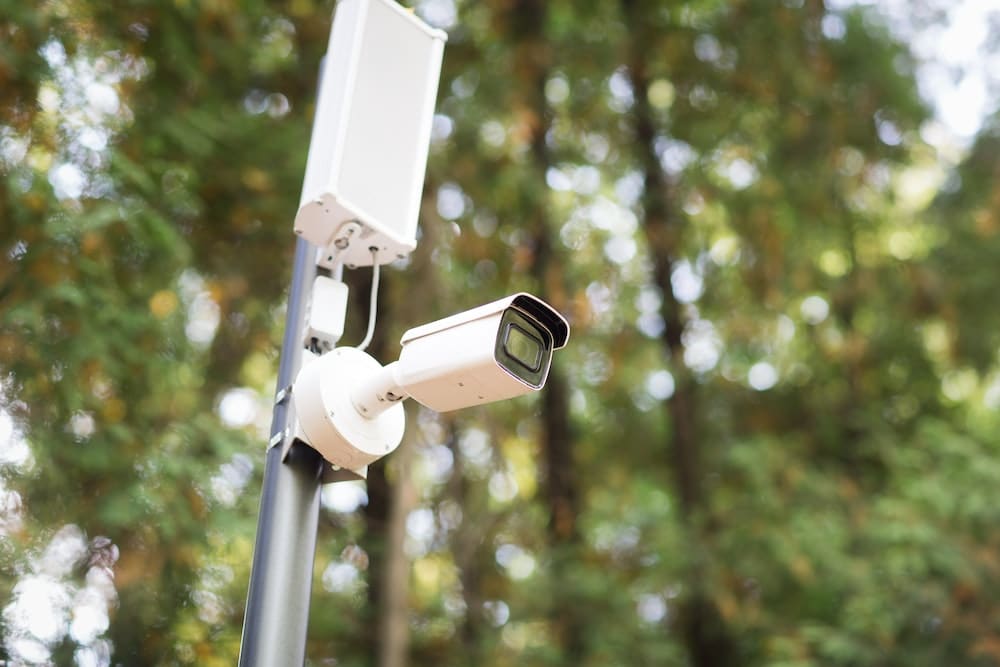Can AI-Integrated Cameras Improve Animal Welfare Monitoring in Farming?

In the evolution of farming methodologies, technology has played a significant role in enhancing productivity and efficiency. With the advent of Artificial Intelligence (AI), the realm of livestock management has witnessed a revolution. In recent times, the usage of AI-integrated cameras for animal welfare monitoring in farming has gained considerable attention. This technology promises to provide a transformative approach to livestock farming, with improved monitoring and data-driven management strategies.
We will look at the potential of AI-integrated cameras in fostering a safe and healthy environment for animals, the role of Google Scholar and Crossref as knowledge sources, and how technology can make dairy farming more productive and smart.
Sujet a lire : How Are Voice-Command Systems Evolving in In-Car Entertainment?
AI-Integrated Cameras: A leap in Livestock Management?
The integration of Artificial Intelligence (AI) with cameras in livestock management is an innovative step towards improving animal welfare. AI-integrated cameras analyze visual data in real-time, providing information on animal health, behavior, and productivity, thus enabling farmers to make informed decisions.
The technology uses algorithms to detect anomalies in the animals’ behavior, body condition, and movement. It can identify early signs of diseases, reduce stress levels by monitoring environmental conditions, and enhance the overall productivity of the farm.
Lire également : How Can Technology Enable Precision Viticulture for Enhanced Wine Quality?
AI-integrated cameras also allow for remote livestock monitoring, saving farmers valuable time and resources. They can keep an eye on their animals from anywhere at any time, ensuring continuous supervision and immediate intervention when necessary. This technology, therefore, not only optimizes the management of livestock but also contributes to animal welfare by preventing diseases and reducing animal stress.
Google Scholar and Crossref: Valuable Resources for Farmers
Google Scholar and Crossref serve as valuable resources for farmers keen on leveraging AI and technology in farming. These platforms offer a wealth of information on the latest research and advancements in farming and AI technology.
Google Scholar provides a broad spectrum of scholarly literature, including articles, theses, books, and conference papers. Farmers can access research on AI applications in farming, case studies on animal welfare, and methodologies for effective livestock management.
On the other hand, Crossref is a digital hub for academic content. It provides metadata on a wide range of content types, providing farmers with access to research data, scholarly articles, and reports. This easy accessibility to knowledge aids farmers in staying abreast of the latest developments in the field and integrating them into their farming practices.
Technology for Smart Dairy Farming
Technology has a pivotal role in transforming dairy farming into a smart, data-driven industry. Automated milking systems, precision feeding, and AI-based health monitoring are some of the technologies reshaping the dairy industry.
Automated milking systems save time and labor and increase milk production efficiency. Meanwhile, precision feeding systems ensure optimal nutrition for the livestock, contributing to their health and productivity.
AI plays a crucial role in health monitoring. AI-integrated cameras can detect early signs of diseases, identify behavioral changes, and monitor the animals’ body condition. This real-time monitoring and instant data analysis can help prevent diseases, reduce the mortality rate, and improve the overall welfare of the animals.
AI Empowering Farmers with Predictive Intelligence
Artificial Intelligence (AI) has the potential to empower farmers with predictive intelligence, making farm management more strategic and efficient. AI algorithms can analyze vast amounts of data from various sources – weather forecasts, soil conditions, animal health records, and more – to make accurate predictions.
These predictions can guide farmers on when to plant crops, when to vaccinate animals, and even predict disease outbreaks. By doing so, AI can contribute to better farm management, increased productivity, and improved animal welfare.
For instance, AI-integrated cameras can predict impending calving in dairy cows by analyzing their behavior and physical changes. It allows farmers to provide timely assistance, ensuring the safety of both the mother and the calf.
In conclusion, AI and technology are revolutionizing farming and livestock management. AI-integrated cameras, in particular, offer a promising solution for effective animal welfare monitoring. They provide valuable insights, enable real-time monitoring, and empower farmers with predictive intelligence, thus enhancing animal health and productivity in farming.
The Role of Computer Vision and Deep Learning in Livestock Management
When we talk about AI-integrated cameras, it’s imperative to dive into the core technologies that make this possible: computer vision and deep learning. These technologies are the backbone of AI-integrated cameras in livestock management, significantly contributing to improved animal welfare.
Computer vision is a field of artificial intelligence that trains computers to interpret and understand the visual world. In the context of farming, computer vision allows AI-integrated cameras to analyze visual data in real-time and track animal activity. This technology can monitor animals’ behavior, body conditions, movements, and detect any anomalies that may signal potential health issues.
On the other hand, deep learning is a machine learning technique that teaches computers to learn by example. In the livestock farming context, it is leveraged to analyze the vast amounts of visual data collected by the cameras and make sense of it. Deep learning can identify patterns and trends in the data, providing valuable insights for decision-making.
For instance, if an animal is limping, the AI-integrated camera, using computer vision, captures this anomaly. Simultaneously, deep learning analyzes patterns and prior data to conclude whether the limp indicates a minor injury or a more serious health issue. This real-time analysis and interpretation allow for immediate intervention, thus protecting animal health and welfare.
PMC Free Articles: An Added Resource for Farmers
While Google Scholar and Crossref provide a comprehensive understanding of AI applications in farming, another valuable resource for farmers is PubMed Central (PMC), an archive of free full-text biomedical and life sciences journal articles.
PMC free articles offer a wealth of information on the use of AI and technology in animal health and livestock production. Farmers can access research papers, reports, and case studies on subject matters like precision livestock farming, machine learning applications in animal health monitoring, and smart farming techniques.
This freely accessible database can aid farmers in staying informed about the latest technological advancements and their application in farming. With knowledge gained from PMC free articles, farmers can better understand how to leverage AI-integrated cameras and other technologies for effective animal welfare monitoring and overall farm management.
Conclusion: The Future of Farming Lies in AI
Artificial Intelligence, particularly AI-integrated cameras, is poised to revolutionize livestock management. By leveraging computer vision and deep learning, these cameras provide a transformative approach to farming, enabling real-time monitoring and a data-driven decision-making process.
Resources like Google Scholar, Crossref, and PMC free articles further equip farmers with the necessary knowledge to adopt and effectively utilize these technologies. From predicting disease outbreaks to optimizing feeding schedules, AI’s potential in farming is far-reaching.
With an increased focus on animal welfare and sustainable farming practices, AI-integrated cameras are a game-changer. They not only enhance livestock production but also ensure a safer and healthier environment for animals. As technology continues to evolve, farmers can look forward to a smarter, more efficient, and more humane approach to farming.
